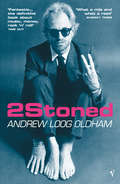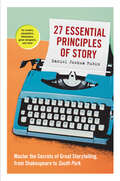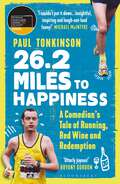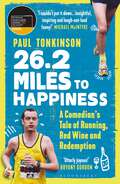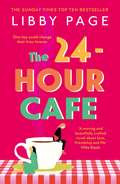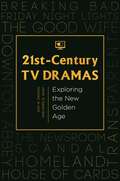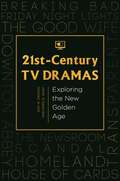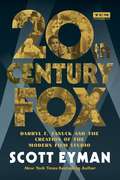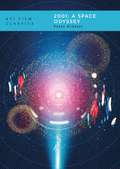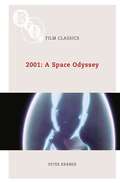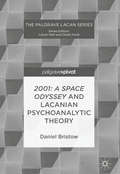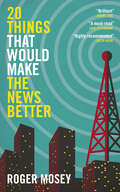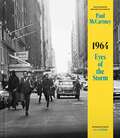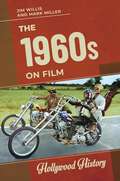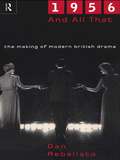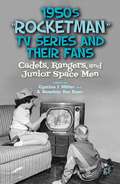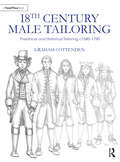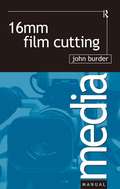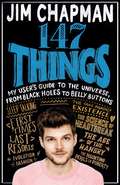- Table View
- List View
2Stoned
by Andrew Loog OldhamIn 1963, in a south London hotel, Andrew Loog Oldham discovered an unknown rhythm and blues band called the Rolling Stones and became their manager and producer; by 1967 they had achieved worldwide celebrity, been arrested in a notorious drugs raid and split with the manager that made them. 2Stoned is the remarkable record of these years, when Oldham's radical strategies transformed them into the Greatest Rock 'n' Roll Band That Ever Drew Breath. In his first book, Stoned, Oldham recorded his early years and the meeting with the Stones that changed all their fates; 2Stoned is the story of what followed.
27 Essential Principles of Story: Master the Secrets of Great Storytelling, from Shakespeare to South Park
by Daniel Joshua RubinA modern and actionable guide to the fundamentals of writing compelling, well-crafted, authentic stories in any medium, with lessons illustrated by novels, plays, films, music, video games, and TV, and writers from Shakespeare and Dostoevsky to Quentin Tarantino and Eminem.
26.2 Miles to Happiness: A Comedian’s Tale of Running, Red Wine and Redemption
by Paul TonkinsonThe hilarious trials and tribulations of stand-up comedian Paul Tonkinson as he attempts to beat the much lauded 3-hour mark at the London Marathon. With a supporting cast of fellow comedians, this is a warmly written and wonderfully honest adventure-through-sport that will both entertain and inspire.Along the way, we are introduced to the characters helping Paul with his quest. Celebrity names such as Bryony Gordon, Russell Howard, Roisin Conaty and Vassos Alexander pop up with wit and wisdom, alongside an alpine adventure to the Mayr Clinic with Michael McIntyre that pushes Paul to the limit. And not forgetting the 'words of wisdom' and derision from Paul's anti-running friend, Richard.
26.2 Miles to Happiness: A Comedian’s Tale of Running, Red Wine and Redemption
by Paul TonkinsonThe hilarious trials and tribulations of stand-up comedian Paul Tonkinson as he attempts to beat the much lauded 3-hour mark at the London Marathon. With a supporting cast of fellow comedians, this is a warmly written and wonderfully honest adventure-through-sport that will both entertain and inspire.Along the way, we are introduced to the characters helping Paul with his quest. Celebrity names such as Bryony Gordon, Russell Howard, Roisin Conaty and Vassos Alexander pop up with wit and wisdom, alongside an alpine adventure to the Mayr Clinic with Michael McIntyre that pushes Paul to the limit. And not forgetting the 'words of wisdom' and derision from Paul's anti-running friend, Richard.
The 24-Hour Café: The new uplifting story of friendship, hope and following your dreams from the Sunday Times bestseller
by Libby PageFrom the Sunday Times bestselling author of The Lido comes a story of friendship, belonging and never giving up on your dreamsWelcome to the café that never sleeps.Day and night, Stella's Café opens its doors to the lonely and the lost, the morning people and the night owls. It's a place where everyone is always welcome, where life can wait at the door.Meet Hannah and Mona: best friends, waitresses, dreamers. They love working at Stella's - the different people they meet, the small kindnesses exchanged. But is it time to step outside and make their own way in life?Come inside and spend twenty-four hours at Stella's Café, where one day might just be enough to change your life . . . ***Praise for The Lido, Libby Page's bestselling debut:'Tender, thought-provoking and uplifting' Daily Mail'Feel-good and uplifting, this charming novel is full of heart' Lucy Diamond'A joyful celebration of community and friendship' Observer'Did I #lovethelido? So much my heart broke a little turning the last page. A stunning debut' Clare Mackintosh'A standout hymn to female friendship and the power of collective action' Stylist'Such a kind and lovely novel, The Lido has a heart that shines from every page' A J Pearce
21st-Century TV Dramas: Exploring the New Golden Age
by Amy M. Damico Sara E. QuayIn its exploration of some of the most influential, popular, or critically acclaimed television dramas since the year 2000, this book documents how modern television dramas reflect our society through their complex narratives about prevailing economic, political, security, and social issues.Television dramas have changed since the turn of the 21st century—for the good, many would say, as a result of changes in technology, the rise of cable networks, and increased creative freedom. This book approaches the new golden age of television dramas by examining the programs that define the first 15 years of the new century through their complex narratives, high production value, star power, popularity, and enthusiastic fan culture.After an introduction that sets the stage for the book's content, thematic sections present concise chapters that explore key connections between television dramas and elements of 21st-century culture. The authors explore Downton Abbey as a distraction from contemporary class struggles, patriarchy and the past in Game of Thrones and Mad Men, and portrayals of the "dark hero protagonist" in The Sopranos, Dexter, and Breaking Bad, as a few examples of the book's coverage. With its multidisciplinary perspectives on a variety of themes—terrorism, race/class/gender, family dynamics, and sociopolitical and socioeconomic topics— this book will be relevant across the social sciences and cultural and media studies courses.
21st-Century TV Dramas: Exploring the New Golden Age
by Amy M. Damico Sara E. QuayIn its exploration of some of the most influential, popular, or critically acclaimed television dramas since the year 2000, this book documents how modern television dramas reflect our society through their complex narratives about prevailing economic, political, security, and social issues.Television dramas have changed since the turn of the 21st century—for the good, many would say, as a result of changes in technology, the rise of cable networks, and increased creative freedom. This book approaches the new golden age of television dramas by examining the programs that define the first 15 years of the new century through their complex narratives, high production value, star power, popularity, and enthusiastic fan culture.After an introduction that sets the stage for the book's content, thematic sections present concise chapters that explore key connections between television dramas and elements of 21st-century culture. The authors explore Downton Abbey as a distraction from contemporary class struggles, patriarchy and the past in Game of Thrones and Mad Men, and portrayals of the "dark hero protagonist" in The Sopranos, Dexter, and Breaking Bad, as a few examples of the book's coverage. With its multidisciplinary perspectives on a variety of themes—terrorism, race/class/gender, family dynamics, and sociopolitical and socioeconomic topics— this book will be relevant across the social sciences and cultural and media studies courses.
20th Century-Fox: Darryl F. Zanuck and the Creation of the Modern Film Studio (Turner Classic Movies)
by Scott EymanFrom New York Times bestselling author Scott Eyman, this is the story one of the most influential studios in film history, from its glory days under the leadership of legendary movie mogul Darryl F. Zanuck up to its 2019 buyout by Disney.March 20, 2019 marked the end of an era -- Disney took ownership of the movie empire that was Fox. For almost a century before that historic date, Twentieth Century-Fox was one of the preeminent producers of films, stars, and filmmakers. Its unique identity in the industry and place in movie history is unparalleled -- and one of the greatest stories to come out of Hollywood. One man, a legendary producer named Darryl F. Zanuck, is the heart of the story. This narrative tells the complete tale of Zanuck and the films, stars, intrigue, and innovations of the iconic studio that was.
2001: A Space Odyssey (BFI Film Classics)
by Peter KrämerStanley Kubrick's 2001: A Space Odyssey (1968) is widely regarded as one of the best films ever made. It has been celebrated for its beauty and mystery, its realistic depiction of space travel and dazzling display of visual effects, the breathtaking scope of its story, which reaches across millions of years, and the thought-provoking depth of its meditation on evolution, technology and humanity's encounters with the unknown. 2001 has been described as the most expensive avant-garde movie ever made and as a psychedelic trip, a unique expression of the spirit of the 1960s and as a timeless masterpiece. Peter Krämer's insightful study explores 2001's complex origins, the unique shape it took and the extraordinary impact it made on contemporary audiences, drawing on new research in the Stanley Kubrick Archive to challenges many of the widely-held assumptions about the film. This edition includes a new afterword by the author.
2001: A Space Odyssey (BFI Film Classics)
by Peter KrämerStanley Kubrick's 2001: A Space Odyssey (1968) is widely regarded as one of the best films ever made. It has been celebrated for its beauty and mystery, its realistic depiction of space travel and dazzling display of visual effects, the breathtaking scope of its story, which reaches across millions of years, and the thought-provoking depth of its meditation on evolution, technology and humanity's encounters with the unknown. 2001 has been described as the most expensive avant-garde movie ever made and as a psychedelic trip, a unique expression of the spirit of the 1960s and as a timeless masterpiece. Peter Krämer's insightful study explores 2001's complex origins, the unique shape it took and the extraordinary impact it made on contemporary audiences, drawing on new research in the Stanley Kubrick Archive to challenges many of the widely-held assumptions about the film. This edition includes a new afterword by the author.
2001: A Space Odyssey (BFI Film Classics)
by Peter KramerStanley Kubrick's 2001: A Space Odyssey (1968) is widely regarded as one of the best films ever made. It has been celebrated for its beauty and mystery, its realistic depiction of space travel and dazzling display of visual effects, the breathtaking scope of its story, which reaches across millions of years, and the thought-provoking depth of its meditation on evolution, technology and humanity's encounters with the unknown. 2001 has been described as the most expensive avant-garde movie ever made and as a psychedelic trip, a unique expression of the spirit of the 1960s and as a timeless masterpiece. Peter Krämer's insightful study explores the complex origins of the film, the unique shape it took and the extraordinary impact it made on contemporary audiences. Drawing on new research in the Stanley Kubrick Archive at the University of the Arts London, Krämer challenges many of the widely-held assumptions about the film. He argues that 2001 was Kubrick's attempt to counter the deep pessimism of his previous film, Dr Strangelove (1964), which culminates in the explosion of a nuclear 'doomsday' device, with a more hopeful vision of humanity's future, facilitated by the intervention of mysterious extra-terrestrial artifacts. This study traces the project's development from the first letter Kubrick wrote to his future collaborator Arthur C. Clarke in March 1964 all the way to the dramatic changes Kubrick made to the film shortly before its release by MGM in April 1968. Krämer shows that, despite – or, perhaps, because of – Kubrick's daring last-minute decision to turn the film itself into a mysterious artifact, 2001 was an instant success with both critics and general audiences, and has exerted enormous influence over Hollywood's output of science fiction movies ever since. The book argues that 2001 invites us to enjoy and contemplate its sounds and images over and over again, and, if we are so inclined, to take away from it an important message of hope.
2001: A Space Odyssey and Lacanian Psychoanalytic Theory
by Daniel BristowIn 1968, Stanley Kubrick completed and released his magnum opus motion picture 2001: A Space Odyssey; a time that was also tremendously important in the formation of the psychoanalytic theory of Jacques Lacan. Bringing these figures together, Bristow offers a study that goes beyond, as the film did. He extends Lacan’s late topological insights, delves into conceptualisations of desire, in G. W. F. Hegel, Alexandre Kojève, and Lacan himself, and deals with the major themes of cuts (filmic and psychoanalytic); space; silence; surreality; and ‘das Ding’, in relation to the movie’s enigmatic monolith. This book is a tour de force of psychoanalytic theory and space odyssey that will appeal to academics and practitioners of psychoanalysis and film studies, as well as to any fan of Kubrick’s work.
2001: A Space Odyssey and Lacanian Psychoanalytic Theory
by Daniel BristowIn 1968, Stanley Kubrick completed and released his magnum opus motion picture 2001: A Space Odyssey; a time that was also tremendously important in the formation of the psychoanalytic theory of Jacques Lacan. Bringing these figures together, Bristow offers a study that goes beyond, as the film did. He extends Lacan’s late topological insights, delves into conceptualisations of desire, in G. W. F. Hegel, Alexandre Kojève, and Lacan himself, and deals with the major themes of cuts (filmic and psychoanalytic); space; silence; surreality; and ‘das Ding’, in relation to the movie’s enigmatic monolith. This book is a tour de force of psychoanalytic theory and space odyssey that will appeal to academics and practitioners of psychoanalysis and film studies, as well as to any fan of Kubrick’s work.
20 Things That Would Make the News Better
by Roger Mosey“A brilliant A-to-Z for the modern newsroom.” – Jeremy Vine “A must-read.” – Julie Etchingham “Highly recommended reading.” – Justin Webb *** We are at a defining point in the history of news. Following a surge of fake news, clickbait and conspiracy theories, the 2020s have ushered in a welter of existential threats for public service broadcasting. So, where do we go from here? Former Today editor and head of BBC television news Roger Mosey thinks public service broadcasters must buck the trends and in this incisive book he offers twenty core ways in which the news can save itself by getting smarter, sharper, more diverse, more nuanced and less exposed to pummelling by politicians. Mosey sees two possible futures: one in which the incitements of populist demagogues and the passions of social media are ever dominant – or one where we fight hard to retain media that has an interest in the public good and preserves truth, fairness and evidence-based judgements. From one of British broadcasting’s most experienced voices comes the definitive exploration of Britain’s news output and what must change if we are to avoid a future of uninspiring news, uninformed decision-making and accountability-dodging politicians.
1964: Eyes Of The Storm
by Paul McCartneyPhotographs and Reflections by Paul McCartney'Millions of eyes were suddenly upon us, creating a picture I will never forget for the rest of my life.'In 2020, an extraordinary trove of nearly a thousand photographs taken by Paul McCartney on a 35mm camera was re-discovered in his archive. They intimately record the months towards the end of 1963 and beginning of 1964 when Beatlemania erupted in the UK and, after the band's first visit to the USA, they became the most famous people on the planet. The photographs are McCartney's personal record of this explosive time, when he was, as he puts it, in the 'Eyes of the Storm'.1964: Eyes of the Storm presents 275 of McCartney's photographs from the six cities of these intense, legendary months - Liverpool, London, Paris, New York, Washington, D.C. and Miami - and many never-before-seen portraits of John, George and Ringo. In his Foreword and Introductions to these city portfolios, McCartney remembers 'what else can you call it - pandemonium' and conveys his impressions of Britain and America in 1964 - the moment when the culture changed and the Sixties really began.1964: Eyes of the Storm includes:- Six city portfolios - Liverpool, London, Paris, New York, Washington, D.C. and Miami - and a Coda on the later months of 1964 - featuring 275 of Paul McCartney's photographs and his candid reflections on them- A Foreword by Paul McCartney- Beatleland, an Introduction by Harvard historian and New Yorker essayist Jill Lepore- A Preface by Nicholas Cullinan, Director of the National Portrait Gallery, London, and Another Lens, an essay by Senior Curator Rosie Broadley
The 1960s on Film (Hollywood History)
by Jim Willis Mark MillerThe 1960s on Film tells the narrative of the 1960s through the lens of the movie camera, analyzing 10 films that focus on the people, events, and issues of the decade.Films create both an impression of and — at times for younger audiences — a primary definition of events, people, and issues of an era. The 1960s on Film examines the 1960s as the decade was presented in ten films that focused on that decade. Discussion will focus on both what the films have to say about the era and how close they come to accurately depicting it.For example, films such as Mississippi Burning and Selma tell the story of racial conflict and hope for reconciliation in the 1960s. Other films such as The Right Stuff and Hidden Figures show the deep fascination America had at that time with the burgeoning space program and NASA, while Easy Rider analyzes the role of rock music and drugs among young people of the decade. The Deer Hunter studies the controversies surrounding the war in Vietnam. The Graduate, Mad Men, JFK, and Thirteen Days also receive significant treatment in this exciting volume.
The 1960s on Film (Hollywood History)
by Jim Willis Mark MillerThe 1960s on Film tells the narrative of the 1960s through the lens of the movie camera, analyzing 10 films that focus on the people, events, and issues of the decade.Films create both an impression of and — at times for younger audiences — a primary definition of events, people, and issues of an era. The 1960s on Film examines the 1960s as the decade was presented in ten films that focused on that decade. Discussion will focus on both what the films have to say about the era and how close they come to accurately depicting it.For example, films such as Mississippi Burning and Selma tell the story of racial conflict and hope for reconciliation in the 1960s. Other films such as The Right Stuff and Hidden Figures show the deep fascination America had at that time with the burgeoning space program and NASA, while Easy Rider analyzes the role of rock music and drugs among young people of the decade. The Deer Hunter studies the controversies surrounding the war in Vietnam. The Graduate, Mad Men, JFK, and Thirteen Days also receive significant treatment in this exciting volume.
1956 and All That: The Making of Modern British Drama
by Dan RebellatoIt is said that British Drama was shockingly lifted out of the doldrums by the 'revolutionary' appearance of John Osborne's Look Back in Anger at the Royal Court in May 1956. But had the theatre been as ephemeral and effeminate as the Angry Young Men claimed? Was the era of Terence Rattigan and 'Binkie' Beaumont as repressed and closeted as it seems? In this bold and fascinating challenge to the received wisdom of the last forty years of theatrical history, Dan Rebellato uncovers a different story altogether. It is one where Britain's declining Empire and increasing panic over the 'problem' of homosexuality played a crucial role in the construction of an enduring myth of the theatre. By going back to primary sources and rigorously questioning all assumptions, Rebellato has rewritten the history of the Making of Modern British Drama.
1956 and All That: The Making of Modern British Drama
by Dan RebellatoIt is said that British Drama was shockingly lifted out of the doldrums by the 'revolutionary' appearance of John Osborne's Look Back in Anger at the Royal Court in May 1956. But had the theatre been as ephemeral and effeminate as the Angry Young Men claimed? Was the era of Terence Rattigan and 'Binkie' Beaumont as repressed and closeted as it seems? In this bold and fascinating challenge to the received wisdom of the last forty years of theatrical history, Dan Rebellato uncovers a different story altogether. It is one where Britain's declining Empire and increasing panic over the 'problem' of homosexuality played a crucial role in the construction of an enduring myth of the theatre. By going back to primary sources and rigorously questioning all assumptions, Rebellato has rewritten the history of the Making of Modern British Drama.
1950s “Rocketman” TV Series and Their Fans: Cadets, Rangers, and Junior Space Men
by Cynthia J. MillerThe fourteen essays featured here focus on series such as Space Patrol, Tom Corbett, and Captain Z-Ro, exploring their roles in the day-to-day lives of their fans through topics such as mentoring, promotion of the real-world space program, merchandising, gender issues, and ranger clubs - all the while promoting the fledgling medium of television.
18th Century Male Tailoring: Theatrical and Historical Tailoring c1680 – 1790
by Graham Cottenden18th Century Male Tailoring: Theatrical and Historical Tailoring c1680 – 1790 introduces the reader to English eighteenth-century tailoring and covers the drafting of patterns, cutting out in cloth and construction techniques in sequence for the tailoring of waistcoats, breeches and coats. From choosing the right cloth to preparing for the fitting process, this how-to guide will help readers create beautiful, historically accurate eighteenth-century male garments for events and performances. The book contains the following: step-by-step instructions complete with illustrations for students and costumiers who are new to the making of male tailored garments from the eighteenth century; drafting blocks and construction techniques for the different styles through the eighteenth century and patterns, photographs, detailed measurements and articles taken from a variety of male coats, waistcoats and trousers from c1680 – c1790 from museums and collections. 18th Century Male Tailoring is written for costume design and construction students, fashion students and practitioners who have a reasonable working knowledge of sewing and general costume making, but not necessarily of tailoring, drafting patterns, cutting skills and the making of male garments.
18th Century Male Tailoring: Theatrical and Historical Tailoring c1680 – 1790
by Graham Cottenden18th Century Male Tailoring: Theatrical and Historical Tailoring c1680 – 1790 introduces the reader to English eighteenth-century tailoring and covers the drafting of patterns, cutting out in cloth and construction techniques in sequence for the tailoring of waistcoats, breeches and coats. From choosing the right cloth to preparing for the fitting process, this how-to guide will help readers create beautiful, historically accurate eighteenth-century male garments for events and performances. The book contains the following: step-by-step instructions complete with illustrations for students and costumiers who are new to the making of male tailored garments from the eighteenth century; drafting blocks and construction techniques for the different styles through the eighteenth century and patterns, photographs, detailed measurements and articles taken from a variety of male coats, waistcoats and trousers from c1680 – c1790 from museums and collections. 18th Century Male Tailoring is written for costume design and construction students, fashion students and practitioners who have a reasonable working knowledge of sewing and general costume making, but not necessarily of tailoring, drafting patterns, cutting skills and the making of male garments.
16mm Film Cutting (Media Manuals Ser.)
by John BurderThe film editor can make or break a film. What ends up on the cutting room floor, and why? 16mm Film Cutting is a step-by-step guide to film cutting which shows you how to achieve professional results.The practical side of the editor's job is clearly described and illustrated; breaking down rushes and making a simple join, identifying shots, first assembly, avoiding errors, preparing special effects, instructing the labs, compiling sound tracks and all the other stages in producing the final film. 16mm Film Cutting is an indispensable aid to editors and assistants working in all areas of 16mm film production.
16mm Film Cutting
by John BurderThe film editor can make or break a film. What ends up on the cutting room floor, and why? 16mm Film Cutting is a step-by-step guide to film cutting which shows you how to achieve professional results.The practical side of the editor's job is clearly described and illustrated; breaking down rushes and making a simple join, identifying shots, first assembly, avoiding errors, preparing special effects, instructing the labs, compiling sound tracks and all the other stages in producing the final film. 16mm Film Cutting is an indispensable aid to editors and assistants working in all areas of 16mm film production.
147 Things: A hilariously brilliant guide to this thing called life
by Jim Chapman'It's Sapiens for teenagers.' The TimesLIFE IS WEIRD.Nothing gives you a sense of perspective like finding out just how weird.I'm an extremely curious chap and with this book I wanted to share the content of my noggin, because I think these are the 147 things that have helped me through this thing we call life. Sometimes because it shows how lucky we are to be here at all, but often because I’m a moron and learned whatever lesson it taught me the hard way, and I’d like to save you the pain of making the same mistakes (I refer here to the waxing of my pubic hair).Ever wondered if first times are over-rated (hint: they are), whether you’ll ever find the one (hint: there are 7 billion of us) or pondered the sheer unlikelihood of the you who is you being in the world right now? If so, then YouTube superstar and fact-obsessed, over-sharer Jim Chapman is here to explain it all – whether it’s why your heart actually aches after a break-up, what’s happening when you get hangry, or why people are just so plain RUDE online.Along the way, we’ll find out how much fun he has when Tanya’s sleep-talking and why he looked like a gangly T-rex with wonky teeth when he was a teenager. As with his videos, no subject is off-limits, as Jim lifts the lid on his life and his relationships, sharing embarrassing stories and things he’s learnt along the way (trust us, the thing about kangaroos will really freak you out).
